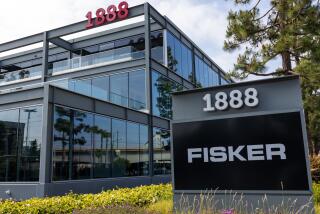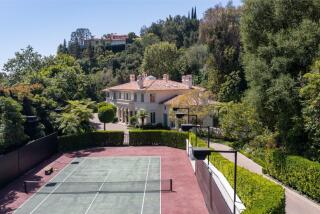Auto Giant Navigated Bumpy Road, Stayed on Course
- Share via
It’s remarkable that Chrysler Corp. is even still around to merge with Daimler-Benz.
Chrysler is the comeback kid of U.S. industry. It’s been on the ropes more than once, most notably in the early 1980s when it won federal loan guarantees that saved the company. More recently, the nation’s third-largest auto maker fended off a hostile 1995 takeover bid by financier Kirk Kerkorian.
Yet Chrysler’s erratic history is also marked by chapters of stunning success, including its repayment of those bailout loans years in advance, its invention of the landmark minivan, its financial prosperity of recent years and, of course, the tenure of Lee Iacocca, who became one of the most famous corporate executives in history while running Chrysler in the 1980s.
“The events surrounding Chrysler’s brush with failure elevated [Iacocca] to a position of unprecedented national prominence for a business leader,” author Doron P. Levin wrote in his book “Behind the Wheel at Chrysler.”
*
But by the early 1990s, when Chrysler again found itself awash in losses, even the charismatic Iacocca, then well into his 60s, was effectively forced to resign by a board of directors that felt Chrysler needed new leadership.
Today, Chrysler is healthy again and has become an industry leader in automotive design and engineering. Last year it sold 2.89 million vehicles and posted a $2.8-billion profit on sales of $61 billion. It employs about 112,000 people worldwide.
It was different executive shuffle, this one in 1922, that spawned Chrysler in the first place.
A former Buick executive, Walter Chrysler, took over that year as chairman of a struggling auto maker called Maxwell Motor Car Co. The executive soon unveiled the first Chrysler car and gave the company his name.
Over the next five decades, Chrysler acquired the Dodge and Plymouth nameplates and until the 1950s was the No. 2 U.S. auto maker, behind General Motors Corp. but ahead of Ford Motor Co. It is now No. 3.
As the energy crisis and efficient Japanese-built cars hit the U.S. market in the 1970s, Chrysler found itself just as vulnerable as its U.S. rivals. Worse, Chrysler was hobbled by chronic defects, production problems, ancient factories and some disastrous models such as the Volare.
*
Enter Iacocca, just fired from the presidency of Ford in a clash with Henry Ford II in 1978. It wasn’t long before Iacocca went to Washington for $1.5 billion in loan guarantees--money that enabled Chrysler to stay in business while launching its compact K-cars.
The Chrysler bailout sparked a national debate over whether Uncle Sam should help save a failing company. But Chrysler’s quest also became a campaign to help the nation’s industrial sector, its troubled urban areas (where its factories were built) and the working class.
There was a substantial human cost along the way. Iacocca ordered wholesale plant closings and layoffs in Michigan, Wisconsin and elsewhere to slash Chrysler’s costs, and United Auto Workers members and other Chrysler workers and suppliers had to make concessions to help Chrysler secure the loan guarantees.
The auto maker then rebounded, led by the 1981 introduction of its new front-wheel K-cars. Its recovery was so swift that Chrysler repaid the loans in 1983, seven years ahead of schedule. Iacocca’s legend grew.
As the 1980s progressed and a severe recession subsided, Chrysler thrived. Improved designs captured drivers’ attention, as did Iacocca’s television advertisements in which he challenged consumers, “If you can find a better car, buy it.” The auto maker also introduced its minivans, helping to usher in an enormously lucrative segment for the auto industry.
Chrysler further expanded its fleet in 1987 by acquiring the No. 4 U.S. auto maker, American Motors, and its Jeep division, for $800 million.
That made Chrysler a major player in another emerging market: sport-utility vehicles.
Despite all that, Chrysler found itself in deep trouble again in the late 1980s as Japanese imports steadily gained market share and as the company fell victim to rising costs and some ill-fated ventures, including its purchase of the jet maker Gulfstream Aerospace.
At the same time, several top Chrysler executives left the company before Iacocca’s retirement in 1992, which was prompted by dissension within Chrysler’s board.
Iacocca was followed by his handpicked successor, former GM executive Robert Eaton, who runs Chrysler today and is negotiating with Daimler-Benz.
Under Eaton’s reign, Chrysler has divested many of its non-auto holdings, become more efficient and enjoyed a prosperous run. One example: Chrysler’s stock has far outperformed the benchmark Standard & Poor’s 500-stock index for the last five years.







